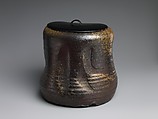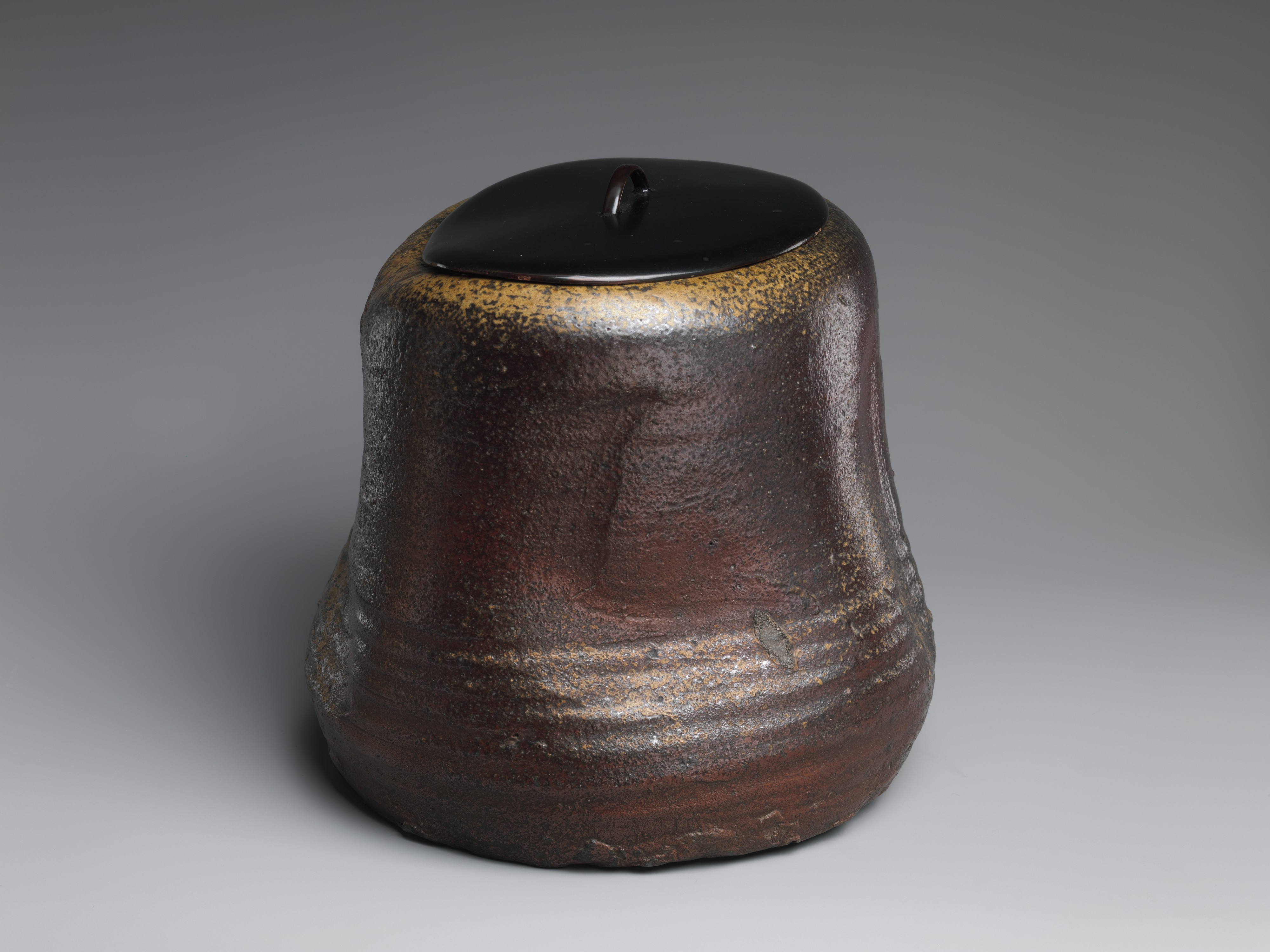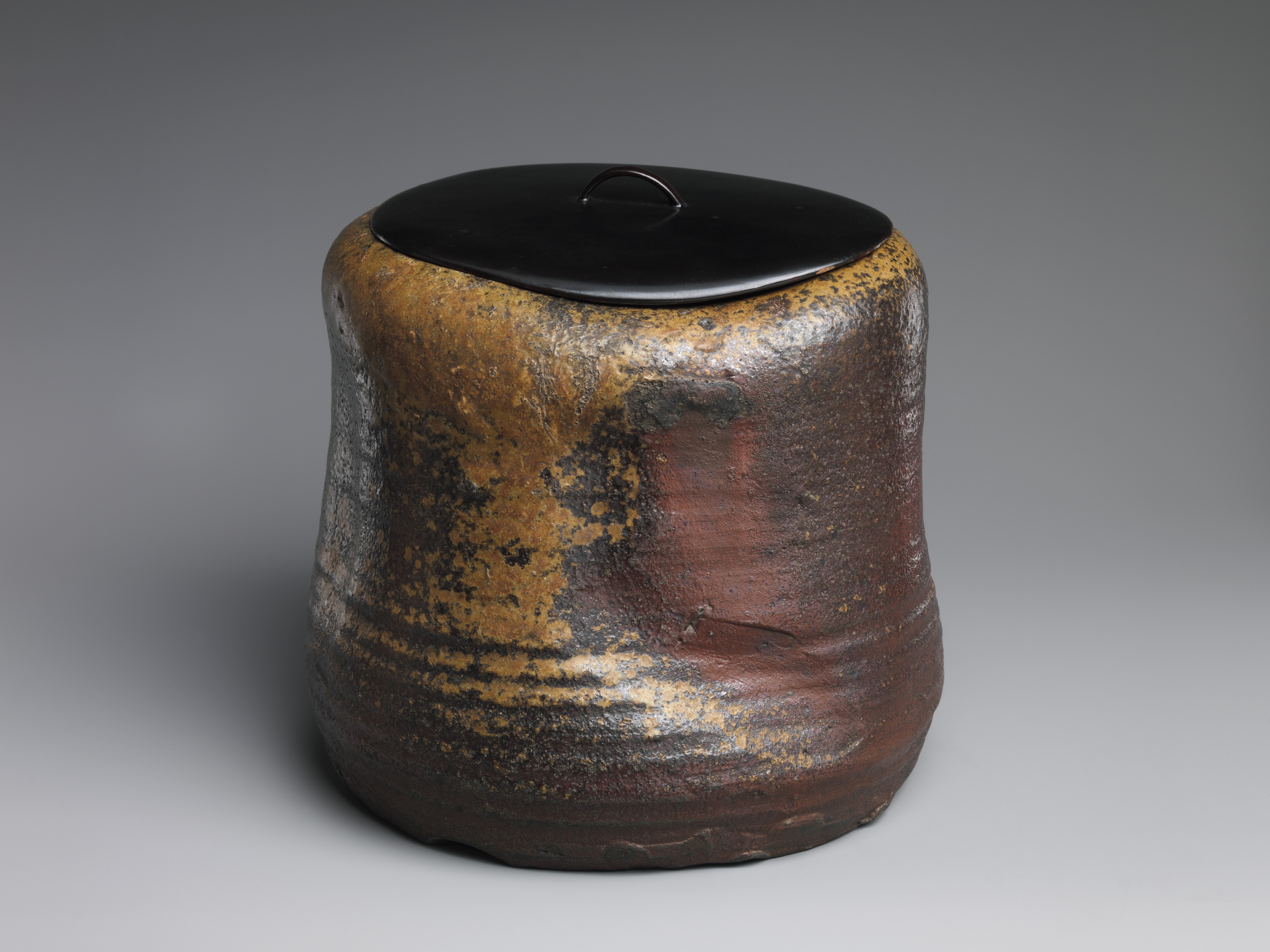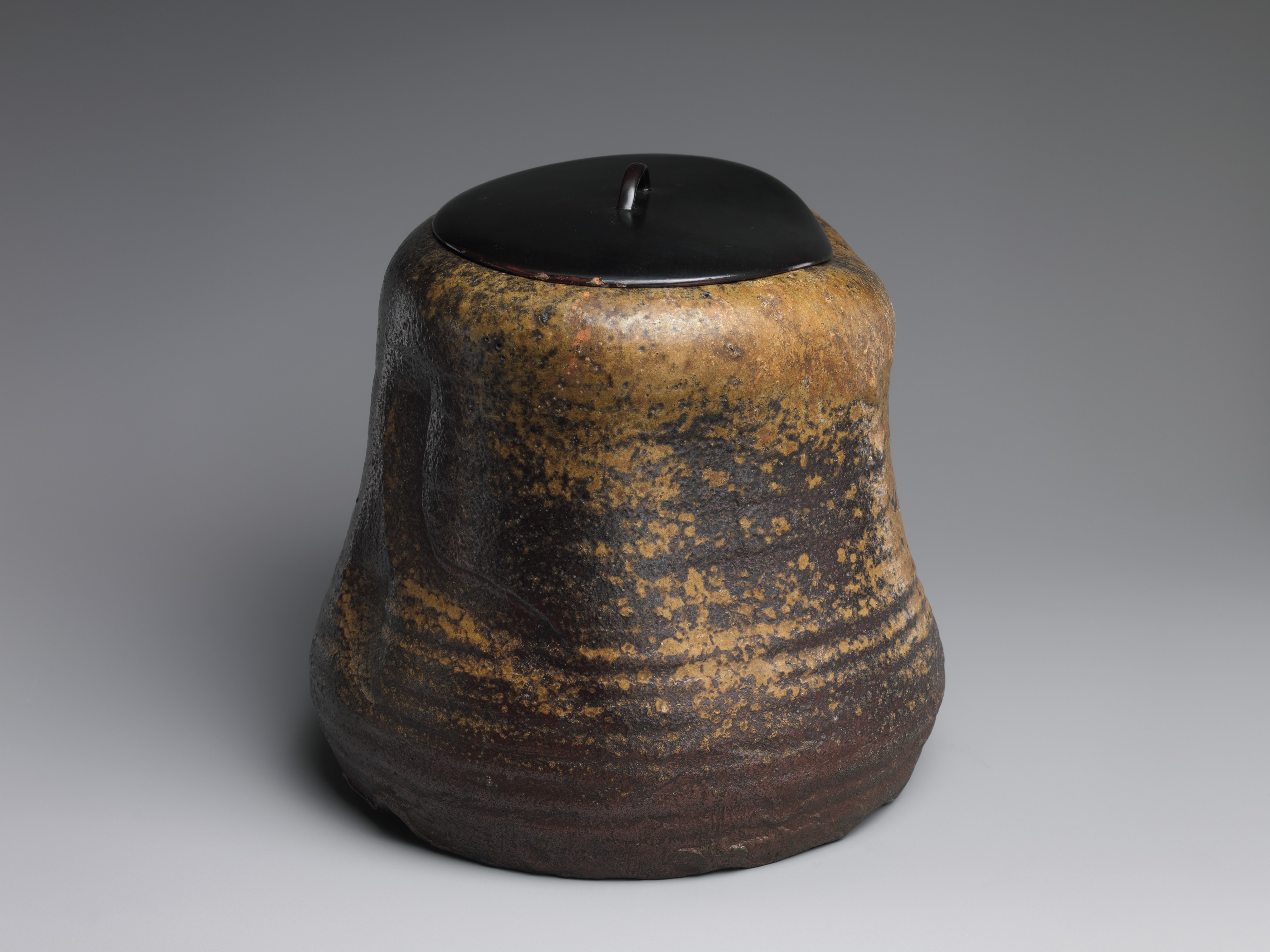Water pot
Not on view
The potter achieved the deformed, asymmetrical shape of this water jar by altering the soft clay after forming the basic shape on a potter's wheel. Such an effect was purposefully created to coincide with an aesthetic associated with the tea ceremony which favored somewhat imperfect forms. The lacquer lid was custom-made for the oddly shaped vessel. Lacquer was a precious substance in Japan, and the contrast between the glossy black lid and the earthy body of the vessel would have been much appreciated within the context of the tea room. In the tea ceremony, this vessel was used as a mizusashi, a container that holds freshwater to rinse the tea bowls or fill the kettle.
Due to rights restrictions, this image cannot be enlarged, viewed at full screen, or downloaded.
This artwork is meant to be viewed from right to left. Scroll left to view more.





